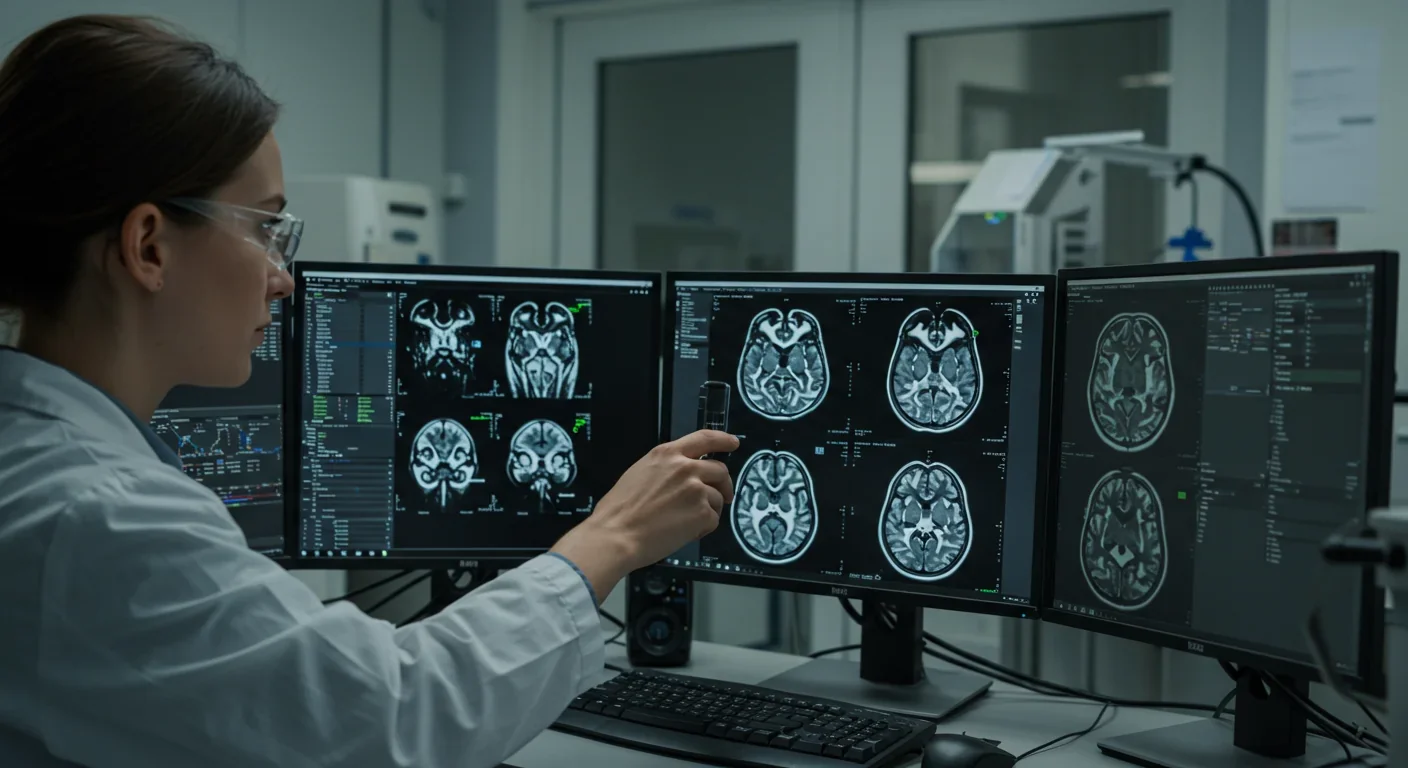Epigenetic Clocks Predict Disease 30 Years Early

TL;DR: Your conscience isn't mystical—it's built into brain circuits shaped by evolution, chemistry, and experience. Neuroscience reveals how specific regions and neurochemicals create moral judgment, reshaping debates on responsibility, AI ethics, and human nature.

Every day, you make countless moral judgments without thinking twice. You hold the door for someone, feel guilty about a white lie, or bristle at news of injustice. These moments feel instinctive, almost automatic. But what's really happening inside your skull when you decide what's right and wrong? The answer isn't some mystical spark of conscience—it's biology, evolution, and circuits firing in your brain. Recent breakthroughs in neuroscience are revealing that morality isn't a philosophical abstraction but a tangible product of brain structure, chemistry, and ancestral survival strategies. Understanding this could transform everything from courtrooms to artificial intelligence development.
Your moral intuitions emerge from specific regions working together like an orchestra. At the heart sits the ventromedial prefrontal cortex (vmPFC), critical for integrating emotion with decision-making. When you weigh whether to lie to spare someone's feelings, your vmPFC is evaluating emotional stakes. The anterior cingulate cortex (ACC) detects conflicts between competing moral values, triggering that uncomfortable feeling when you're torn between two choices. The amygdala flags morally salient situations—like witnessing harm to others. Meanwhile, the temporoparietal junction (TPJ) helps you take another person's perspective, essential for cognitive empathy.
Research using hyperscanning EEG technology reveals something surprising: during moral negotiations between two people, it's not synchrony but dissimilarity in left frontal delta brain waves that marks successful ethical deliberation. Your brain and mine don't need to mirror each other to reach agreement—they need to complement each other. Studies in patients with frontotemporal dementia underscore how fragile this system is. When the right vmPFC atrophies, patients show reduced aversion to harming others, increased rule-breaking, and diminished empathy—independently of broader cognitive decline.
To understand why your brain is wired for morality, travel back millions of years. Our primate ancestors lived in complex social groups where cooperation meant survival. If you couldn't predict others' intentions, share resources fairly, or punish cheaters, you'd be ostracized or dead. Natural selection favored individuals whose brains could navigate these social minefields. Primates like sooty mangabeys adjust their behavior based on who's watching, suggesting rudimentary reputation management. Even young children show preferences for fairness before extensive cultural conditioning.
Evolution didn't hand us a fixed moral code. Instead, it gave us flexible machinery that cultural learning shapes. The prefrontal cortex, which expanded dramatically in human evolution, allows us to override immediate impulses. This neuroplasticity means your moral brain is sculpted by values you're exposed to, from childhood parenting to media narratives. Research on psychopathy reveals what happens when evolutionary wiring goes awry. Individuals with psychopathic traits show reduced gray matter in the vmPFC, amygdala, and temporal poles—regions supporting empathy and harm aversion. This isn't philosophical failure; it's biological, raising profound questions about culpability.

You've heard the old dichotomy: emotions are impulsive, reason is rational, and morality requires conquering the former. Neuroscience says that's wrong. Emotion and cognition are deeply intertwined in moral judgment, not adversaries but partners. When you see someone in distress, your amygdala and anterior insula light up almost instantly, generating empathy. This rapid response often drives prosocial behavior before you've consciously deliberated. Your brain's quick-and-dirty emotional circuits are often more reliable than slow deliberation.
Yet deliberation matters when intuition misleads. The prefrontal cortex kicks in when you need to override gut reactions—like suppressing bias or considering long-term consequences. Pausing intuitive thinking favors complex reasoning, allowing you to weigh competing values. Studies using transcranial direct current stimulation show that boosting vmPFC activity enhances self-focused decision-making but doesn't improve choices made on behalf of others—revealing that your brain treats self-interest and altruism through partially distinct pathways.
Under stress or time pressure, the balance shifts. Your prefrontal cortex gets bypassed, and emotion-driven shortcuts dominate. People are more likely to act on prejudice, fear, or anger. If we want ethical behavior in high-stakes situations—emergency rooms, battlefields, financial markets—we need environments that support slower, reflective processing.
Morality isn't just about brain structure. Oxytocin, the bonding hormone, increases trust and empathy, making you more likely to cooperate. Serotonin modulates impulse control and aggression; low serotonin links to antisocial behavior. Dopamine influences how much you value fairness and reciprocity. Genetic variation affects these systems. Twin studies suggest traits like empathy and aggression are moderately heritable, with genes influencing neurotransmitter function. Variants in the MAOA gene have been associated with increased aggression—though only in combination with environmental stressors like childhood abuse.
Hormonal fluctuations matter too. Testosterone can increase status-seeking and reduce empathy, but also promotes fairness when reputation is on the line. Cortisol dampens the prefrontal cortex's regulatory power, making you more reactive. Chronic stress erodes moral judgment through neurochemical disruption. Environmental factors interact with biology in complex ways. Early trauma can permanently alter stress-response systems, shrinking the hippocampus and hyperactivating the amygdala. Conversely, enriching environments strengthen prefrontal circuits and enhance moral reasoning.
Neuroscience's most striking moral insights come from patients whose brains reveal what happens when the machinery fails. Frontotemporal dementia, which erodes the vmPFC and temporal lobes, often transforms previously upstanding individuals into impulsive rule-breakers. They steal, lie, and violate social norms—not from malice but because harm-aversion circuits have degraded. Psychopathy shows diminished activity in the vmPFC and amygdala when viewing others' distress. Many retain cognitive empathy—they understand others' perspectives—but lack affective empathy, the visceral concern that motivates prosocial behavior.
Traumatic brain injury can also alter moral character. Damage to the orbitofrontal cortex produces disinhibition, poor social judgment, and reduced guilt. Patients may become aggressive or callous, yet retain the ability to articulate moral principles. They know right from wrong but can't feel it—a profound reminder that moral knowledge and moral motivation are neurally dissociable. These cases force us to rethink blame and punishment. If antisocial behavior stems from brain dysfunction, does punishment make sense, or should we focus on rehabilitation?

Understanding morality's neuroscience has real-world consequences. In law, the concept of mens rea assumes people freely choose their actions. But if a defendant has vmPFC damage or psychopathic traits, did they have the neural capacity for genuine moral choice? Some legal scholars argue for a neuroscience-informed justice system that focuses on risk management and rehabilitation rather than retribution. Artificial intelligence poses a different challenge. As we build AI systems that make ethical decisions—self-driving cars, algorithms deciding loans or parole—we're outsourcing moral judgment. But AI lacks the embodied, emotional, and social context that shapes human ethics.
In education and parenting, neuroscience suggests moral development isn't just about teaching rules—it's about nurturing brain circuits that support empathy, self-control, and perspective-taking. Practices like mindfulness training strengthen prefrontal regulation, while secure attachments enhance empathy networks. Punitive approaches that trigger chronic stress may damage the circuits we want to strengthen. For individuals, the takeaway is both empowering and humbling. You're not a perfectly rational moral agent; you're a biological organism whose ethical intuitions are shaped by brain structure, chemistry, and experience. Recognizing this fosters humility about your judgments and compassion for others' failures. It also means you can cultivate moral capacities through reflection, diverse perspectives, and practices that strengthen prefrontal control.
Despite the hype, neuroscience hasn't solved morality. Brain scans can show which regions activate during moral judgments, but they can't tell us what's right. Knowing your vmPFC fires when you donate to charity doesn't settle whether donating is obligatory or misguided. Neuroscience describes the machinery; it doesn't determine the destination. There's also the risk of neuro-reductionism—the idea that morality is "just" neurons and chemicals. This ignores social, cultural, and historical dimensions that give ethical norms their meaning. Your brain evolved to cooperate in small, face-to-face groups, but today's moral challenges—climate change, global inequality, digital privacy—demand reasoning that outstrips our ancestral wiring.
Another myth is that neuroscience will reveal universal moral truths. While certain intuitions like harm aversion appear cross-culturally with clear neural correlates, there's enormous variation in interpretation. Collectivist cultures prioritize group harmony, individualist ones emphasize personal autonomy. Research on fairness and cooperation shows that experiencing unfairness can shift neural processing and reduce prosocial behavior—underscoring how context shapes moral cognition.
As technology advances, morality's neuroscience will intersect with pressing questions. Neuroenhancement—using drugs or stimulation to boost empathy or self-control—is already on the horizon. Should we? Could we inadvertently erode authentic moral agency? Gene editing might one day let us tweak the biological substrates of conscience. Global cooperation demands moral circle expansion—caring about distant strangers, future generations, even non-human animals. But our brains, tuned for in-group favoritism, resist this leap. Abstract reasoning must override emotional parochialism, a cognitively costly process.
Social media amplifies outrage, exploits reputation-management instincts, and short-circuits deliberative reasoning. Understanding how platforms hijack moral psychology could guide interventions—designing interfaces that promote reflection rather than reactive judgment. Ultimately, the neuroscience of morality is a mirror held up to humanity. It shows us that our noblest instincts and darkest impulses share the same biological roots. It reveals that ethical behavior is not a given but an achievement, requiring brain circuits that function well, environments that nurture them, and cultures that guide them.
As we unravel the biology of conscience, we gain not just knowledge but responsibility—to use these insights wisely, to build systems that support moral flourishing, and to remember that beneath every ethical dilemma is a human brain navigating a world more complex than evolution anticipated. Your brain makes morality possible, but it doesn't make it inevitable. The next time you face an ethical choice, you'll know there's a vast neural network humming beneath the surface—ancient circuits and modern reasoning, emotion and logic, biology and culture, all converging in a single moment of decision. What you do with that moment is still up to you.

Recent breakthroughs in fusion technology—including 351,000-gauss magnetic fields, AI-driven plasma diagnostics, and net energy gain at the National Ignition Facility—are transforming fusion propulsion from science fiction to engineering frontier. Scientists now have a realistic pathway to accelerate spacecraft to 10% of light speed, enabling a 43-year journey to Alpha Centauri. While challenges remain in miniaturization, neutron management, and sustained operation, the physics barriers have ...

Epigenetic clocks measure DNA methylation patterns to calculate biological age, which predicts disease risk up to 30 years before symptoms appear. Landmark studies show that accelerated epigenetic aging forecasts cardiovascular disease, diabetes, and neurodegeneration with remarkable accuracy. Lifestyle interventions—Mediterranean diet, structured exercise, quality sleep, stress management—can measurably reverse biological aging, reducing epigenetic age by 1-2 years within months. Commercial ...

Data centers consumed 415 terawatt-hours of electricity in 2024 and will nearly double that by 2030, driven by AI's insatiable energy appetite. Despite tech giants' renewable pledges, actual emissions are up to 662% higher than reported due to accounting loopholes. A digital pollution tax—similar to Europe's carbon border tariff—could finally force the industry to invest in efficiency technologies like liquid cooling, waste heat recovery, and time-matched renewable power, transforming volunta...

Humans are hardwired to see invisible agents—gods, ghosts, conspiracies—thanks to the Hyperactive Agency Detection Device (HADD), an evolutionary survival mechanism that favored false alarms over fatal misses. This cognitive bias, rooted in brain regions like the temporoparietal junction and medial prefrontal cortex, generates religious beliefs, animistic worldviews, and conspiracy theories across all cultures. Understanding HADD doesn't eliminate belief, but it helps us recognize when our pa...

The bombardier beetle has perfected a chemical defense system that human engineers are still trying to replicate: a two-chamber micro-combustion engine that mixes hydroquinone and hydrogen peroxide to create explosive 100°C sprays at up to 500 pulses per second, aimed with 270-degree precision. This tiny insect's biochemical marvel is inspiring revolutionary technologies in aerospace propulsion, pharmaceutical delivery, and fire suppression. By 2030, beetle-inspired systems could position sat...

The U.S. faces a catastrophic care worker shortage driven by poverty-level wages, overwhelming burnout, and systemic undervaluation. With 99% of nursing homes hiring and 9.7 million openings projected by 2034, the crisis threatens patient safety, family stability, and economic productivity. Evidence-based solutions—wage reforms, streamlined training, technology integration, and policy enforcement—exist and work, but require sustained political will and cultural recognition that caregiving is ...

Every major AI model was trained on copyrighted text scraped without permission, triggering billion-dollar lawsuits and forcing a reckoning between innovation and creator rights. The future depends on finding balance between transformative AI development and fair compensation for the people whose work fuels it.